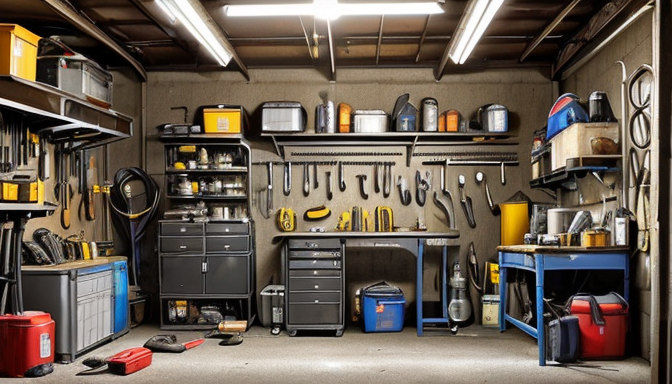Have you ever found yourself stranded on the side of the road, wondering how you could have avoided that situation? DIY car repairs are not just a trend; they are a lifesaver for drivers who want to save money and gain independence. From changing a tire to fixing a leaky radiator, understanding the basics of car maintenance can empower you to tackle common issues head-on. Imagine the satisfaction of handling a problem on your own, without waiting for a tow truck or shelling out big bucks at a mechanic’s shop!
To get started, it’s crucial to learn some essential car maintenance tips. Regularly checking your oil, monitoring tire pressure, and keeping an eye on fluid levels can prevent many headaches down the road. Additionally, knowing how to troubleshoot simple problems can save you time and stress. For instance, if your car won’t start, it could be as simple as a dead battery or a loose connection. Wouldn’t it be great to diagnose these issues yourself?
Moreover, there are countless DIY repair tutorials available online that can guide you through various processes. Whether you’re looking to replace brake pads or change your air filter, these resources can provide step-by-step instructions tailored to your specific vehicle. So grab your tools, roll up your sleeves, and let’s dive into the world of DIY car repairs!
Essential Tools for DIY Car Repairs
When it comes to DIY car repairs, having the right tools is half the battle. Imagine trying to bake a cake without a mixer; it just wouldn’t work! Similarly, your toolbox needs to be well-stocked to tackle common car issues effectively. So, what should you have in your arsenal? Let’s break it down.
First up, a good set of wrenches is essential. These come in various sizes and can help you tackle everything from changing oil to replacing spark plugs. Alongside wrenches, a screwdriver set—both flathead and Phillips—will serve you well for numerous tasks, from tightening loose panels to fixing electrical issues.
Don’t forget about jack stands and a floor jack. These tools are crucial for safely lifting your vehicle, allowing you to get under your car without risking injury. Always prioritize safety! Additionally, a multimeter can be a lifesaver for diagnosing electrical problems. It’s like having a doctor for your car’s electrical system, helping you pinpoint issues with ease.
Here’s a quick table summarizing the essential tools:
| Tool | Purpose |
|---|---|
| Wrenches | For loosening and tightening bolts |
| Screwdriver Set | For various fastening tasks |
| Jack Stands | For safely lifting the car |
| Floor Jack | To lift heavy vehicles |
| Multimeter | For diagnosing electrical problems |
With these tools in your kit, you’ll be well-prepared to handle a variety of car repairs. Remember, the more you practice, the more confident you’ll become. So, roll up your sleeves and get ready to dive into the world of DIY car maintenance!

Common Car Problems and Fixes
Every driver knows the sinking feeling when their car starts acting up. Whether it’s that annoying engine light flickering on or the strange noises coming from under the hood, being equipped with knowledge can save you both time and money. Let’s dive into some common car issues and how you can tackle them like a pro!
One of the most frequent problems is a dead battery. If your car won’t start, it might just be the battery. Check for corrosion on the terminals and try jump-starting it with jumper cables. If it starts, great! But if it doesn’t hold a charge, it might be time for a replacement. Remember, batteries usually last about 3-5 years, so keep an eye on their age!
Another common issue is flat tires. It can happen to anyone, and knowing how to change a tire is a must-have skill. First, ensure you have a spare tire, jack, and lug wrench. If you find yourself in this situation, loosen the lug nuts, lift the car with the jack, swap the tire, and tighten everything back up. Voila! You’re back on the road.
Lastly, let’s not forget about overheating engines. If your temperature gauge is climbing, pull over immediately. Check the coolant level and look for leaks. If it’s low, adding coolant can help, but if the problem persists, it might be a sign of a more serious issue. Always keep an eye on your car’s temperature to avoid costly repairs down the line!
By familiarizing yourself with these common car problems and their fixes, you’ll not only gain confidence in handling minor issues but also ensure your vehicle runs smoothly for years to come. Remember, a little knowledge goes a long way!
Frequently Asked Questions
- What tools do I need for basic DIY car repairs?
For starters, having a basic toolkit is essential. You’ll want a set of wrenches, screwdrivers, pliers, and a jack. Don’t forget a multimeter for electrical issues and a work light to see what you’re doing!
- Can I really fix my car on my own?
Absolutely! Think of it like cooking; once you learn the recipe, you can whip up a meal in no time. With some guidance and practice, you can tackle many common issues like changing oil or replacing a battery.
- How do I know if a problem is too complicated to fix myself?
If you’re facing a problem that requires specialized tools or knowledge, like transmission work, it might be best to consult a professional. Trust your gut—if it feels overwhelming, don’t hesitate to ask for help!
- What common car problems can I fix myself?
Many issues are DIY-friendly! You can handle flat tires, brake pad replacements, and even battery changes. Knowing these basics can save you both time and money!